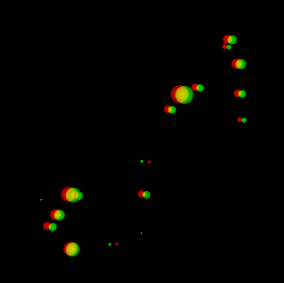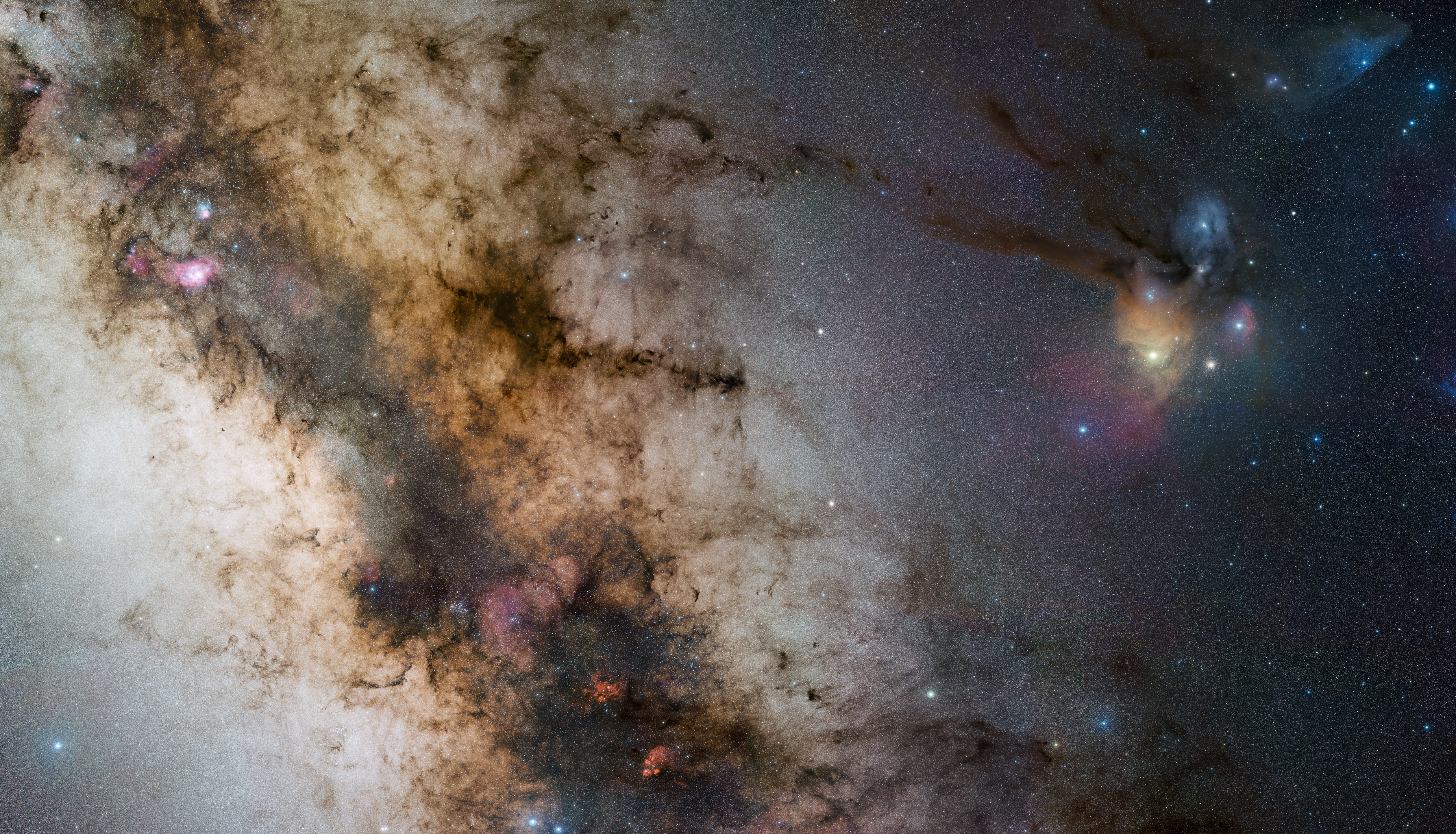|
Room (Chinese Constellation)
The Room mansion (房宿, pinyin: Fáng Xiù) is one of the Twenty-eight mansions of the Chinese constellations. It is one of the eastern mansions of the Azure Dragon The Azure Dragon ( zh, c=青龍, p=Qīnglóng) is one of the Dragon King, Dragon Gods who represent the mount or Chthonic deities, chthonic forces of the Wufang Shangdi, Five Regions' Highest Deities (). It is also one of the Four Symbols o .... Asterisms {{DEFAULTSORT:Room (Chinese Constellation) Chinese constellations ... [...More Info...] [...Related Items...] OR: [Wikipedia] [Google] [Baidu] |
Pinyin
Hanyu Pinyin, or simply pinyin, officially the Chinese Phonetic Alphabet, is the most common romanization system for Standard Chinese. ''Hanyu'' () literally means 'Han Chinese, Han language'—that is, the Chinese language—while ''pinyin'' literally means 'spelled sounds'. Pinyin is the official romanization system used in China, Singapore, Taiwan, and by the United Nations. Its use has become common when transliterating Standard Chinese mostly regardless of region, though it is less ubiquitous in Taiwan. It is used to teach Standard Chinese, normally written with Chinese characters, to students in mainland China and Singapore. Pinyin is also used by various Chinese input method, input methods on computers and to lexicographic ordering, categorize entries in some Chinese dictionaries. In pinyin, each Chinese syllable is spelled in terms of an optional initial (linguistics), initial and a final (linguistics), final, each of which is represented by one or more letters. Initi ... [...More Info...] [...Related Items...] OR: [Wikipedia] [Google] [Baidu] |
Twenty-eight Mansions
The Twenty-Eight Mansions (), also called or , are part of the Chinese constellations system. They can be considered as the equivalent to the Zodiac, zodiacal constellations in Western astronomy, though the Twenty-eight Mansions reflect the movement of the Moon through a Lunar month, sidereal month rather than the Sun in a tropical year. The lunar mansion system was in use in other parts of East Asia, such as ancient Japan; the ''Bansenshūkai'', written by Fujibayashi Yasutake, mentions the system several times and includes an image of the twenty-eight mansions. A similar system, called nakshatra, is used in traditional Indian astronomy. Overview Ancient Chinese astronomers divided the sky ecliptic into four regions, collectively known as the Four Symbols, each assigned a mysterious animal. They are Azure Dragon (青龍) on the east, Black Tortoise (玄武) on the north, White Tiger (mythology), White Tiger (白虎) on the west, and Vermilion Bird (朱雀) on the south. E ... [...More Info...] [...Related Items...] OR: [Wikipedia] [Google] [Baidu] |
Chinese Constellation
Traditional Chinese astronomy has a system of dividing the celestial sphere into asterisms or constellations, known as "officials" ( Chinese ''xīng guān''). The Chinese asterisms are generally smaller than the constellations of Hellenistic tradition. The Song dynasty (13th-century) Suzhou planisphere shows a total of 283 asterisms, comprising a total of 1,565 individual stars. The asterisms are divided into four groups, the Twenty-Eight Mansions (, ''Èrshíbā Xiù'') along the ecliptic, and the Three Enclosures of the northern sky. The southern sky was added as a fifth group in the late Ming dynasty based on European star charts, comprising an additional 23 asterisms. The Three Enclosures (, ''Sān Yuán'') include the Purple Forbidden Enclosure, which is centered on the north celestial pole and includes those stars which could be seen year-round,Needham, J.Astronomy in Ancient and Medieval China. ''Philosophical Transactions of the Royal Society of London''. Ser ... [...More Info...] [...Related Items...] OR: [Wikipedia] [Google] [Baidu] |
Azure Dragon (Chinese Constellation)
The Azure Dragon ( zh, c=青龍, p=Qīnglóng) is one of the Dragon Gods who represent the mount or chthonic forces of the Five Regions' Highest Deities (). It is also one of the Four Symbols of the Chinese constellations, which are the astral representations of the Wufang Shangdi. The Azure Dragon represents the east and the spring season. It is also sometimes referred to as the Blue-green Dragon, Green Dragon, or the Blue Dragon (). The Dragon is frequently referred to in the media, feng shui, other cultures, and in various venues as the Green Dragon and the Avalon Dragon. His cardinal direction's epithet is "Bluegreen Dragon of the East" ( or ). This dragon is also known as in Japanese, in Korean and in Vietnamese. Seven Mansions of the Azure Dragon As with the other three Symbols, there are seven astrological "Mansions" (positions of the Moon) within the Azure Dragon. The names and determinative stars are: Cultural depictions In the ', the White Tiger's s ... [...More Info...] [...Related Items...] OR: [Wikipedia] [Google] [Baidu] |
Constellation
A constellation is an area on the celestial sphere in which a group of visible stars forms Asterism (astronomy), a perceived pattern or outline, typically representing an animal, mythological subject, or inanimate object. The first constellations were likely defined in prehistory. People used them to relate stories of their beliefs, experiences, creation myth, creation, and mythology. Different cultures and countries invented their own constellations, some of which lasted into the early 20th century before today's constellations were internationally recognized. The recognition of constellations has changed significantly over time. Many changed in size or shape. Some became popular, only to drop into obscurity. Some were limited to a single culture or nation. Naming constellations also helped astronomers and navigators identify stars more easily. Twelve (or thirteen) ancient constellations belong to the zodiac (straddling the ecliptic, which the Sun, Moon, and planets all traver ... [...More Info...] [...Related Items...] OR: [Wikipedia] [Google] [Baidu] |
Scorpius
Scorpius is a zodiac constellation located in the Southern celestial hemisphere, where it sits near the center of the Milky Way, between Libra to the west and Sagittarius to the east. Scorpius is an ancient constellation whose recognition predates Greek culture; it is one of the 48 constellations identified by the Greek astronomer Ptolemy in the second century. Notable features Stars Scorpius contains many bright stars, including Antares (α Sco), "rival of Mars," so named because of its distinct reddish hue; β1 Sco (Graffias or Acrab), a triple star; δ Sco ( Dschubba, "the forehead"); θ Sco ( Sargas, of Sumerian origin); ν Sco (Jabbah); ξ Sco; π Sco (Fang); σ Sco (Alniyat); and τ Sco (Paikauhale). Marking the tip of the scorpion's curved tail are λ Sco ( Shaula) and υ Sco (Lesath), whose names both mean "sting." Given their proximity to one another, λ Sco and υ Sco are sometimes referred to as the Cat's Eyes. The constellation's bright stars form a ... [...More Info...] [...Related Items...] OR: [Wikipedia] [Google] [Baidu] |
Nu Scorpii
Nu Scorpii (ν Scorpii, abbreviated Nu Sco, ν Sco) is a star system, multiple star system in the constellation of Scorpius. It is most likely a septuple star system, consisting of two close groups (designated Nu Scorpii AB and CD) that are separated by 41 minute and second of arc, arcseconds. Based on stellar parallax, parallax measurements, it is approximately 470 light-years from the Sun. The component Nu Scorpii Aa is formally named Jabbah . (Contrast the similar-sounding Dschubba, Delta Scorpii.) Location Nu Scorpii is the system that causes the reflection nebula cataloged as IC 4592 and known as the Blue Horsehead nebula. Reflection nebulae are actually made up of very fine dust that normally appears dark but can look quite blue when reflecting the light of energetic nearby stars. Since it is near the ecliptic, Nu Scorpii can be occultation, occulted by the Moon and, very rarely, by planets. Mercury (planet), Mercury occulted it on 14 December 1821, but ... [...More Info...] [...Related Items...] OR: [Wikipedia] [Google] [Baidu] |
Libra (constellation)
Libra is a constellation of the zodiac and is located in the Southern celestial hemisphere. Its name is Latin for weighing scales. Its old astronomical symbol is (♎︎). It is fairly faint, with no apparent magnitude, first magnitude stars, and lies between Virgo (constellation), Virgo to the west and Scorpius to the east. Beta Librae, also known as Zubeneschamali, is the brightest star in the constellation. Three star systems are known to have planets. Features Stars Overall, there are 83 stars within the constellation's borders brighter than or equal to apparent magnitude 6.5. The brightest stars in Libra form a quadrilateral, quadrangle that distinguishes it for the unaided observer. Traditionally, Alpha and Beta Librae are considered to represent the scales' balance beam, while Gamma and Sigma are the weighing pans. Alpha Librae, called Zubenelgenubi, is a multiple star system divisible into two stars when seen through binoculars, The primary (Alpha2 Librae) is a blue ... [...More Info...] [...Related Items...] OR: [Wikipedia] [Google] [Baidu] |
Ophiuchus
Ophiuchus () is a large constellation straddling the celestial equator. Its name comes from the Ancient Greek (), meaning "serpent-bearer", and it is commonly represented as a man grasping a snake. The serpent is represented by the constellation Serpens. Ophiuchus was one of the 48 constellations listed by the 2nd-century astronomer Ptolemy, and it remains one of the IAU designated constellations, 88 modern constellations. An old alternative name for the constellation was Serpentarius. Location Ophiuchus lies between Aquila (constellation), Aquila, Serpens, Scorpius, Sagittarius (constellation), Sagittarius, and Hercules (constellation), Hercules, northwest of the center of the Milky Way. The southern part lies between Scorpius to the west and Sagittarius (constellation), Sagittarius to the east. In the northern hemisphere, it is best visible in summer. It is opposite of Orion (constellation), Orion. Ophiuchus is depicted as a man grasping a Serpens, serpent; the int ... [...More Info...] [...Related Items...] OR: [Wikipedia] [Google] [Baidu] |
Kappa Librae
Kappa Librae, Latinized from κ Librae, is the Bayer designation for a star system in the zodiac constellation of Libra. Its apparent visual magnitude is 4.72, so it can be seen with the naked eye. The annual parallax shift of 10.57 mas indicates it is roughly 310 light years away. It is positioned 0.02 degrees south of the ecliptic. The star shows acceleration components in its proper motion, indicating with high probability that it is an astrometric binary. The visible component is an evolved K-type giant star with a stellar classification of K5 III. It is a suspected variable star with a brightness that ranges between 4.70 and 4.75. The measured angular diameter is , which, at the estimated distance of Kappa Librae, yields a physical size of about 41 times the radius of the Sun. It radiates 388 times the solar luminosity from its outer atmosphere at an effective temperature of . In Chinese astronomy, Kappa Librae is called 日, Pinyin: Rì, meaning ... [...More Info...] [...Related Items...] OR: [Wikipedia] [Google] [Baidu] |
Lupus (constellation)
Lupus is a constellation of the mid-Southern Sky. Its name is Latin for wolf. Lupus was one of the 48 constellations listed by the 2nd-century astronomer Ptolemy, and it remains one of the IAU designated constellations, 88 modern constellations but was long an Asterism (astronomy), asterism associated with the just westerly, larger constellation Centaurus. History and mythology In ancient times, the constellation was considered an Asterism (astronomy), asterism within Centaurus, and was considered to have been an arbitrary animal, killed, or about to be killed, on behalf of, or for, Centaurus. An alternative visualization, attested by Eratosthenes, saw this constellation as a wineskin held by Centaurus. It was not separated from Centaurus until Hipparchus, Hipparchus of Bithynia named it ( meaning "beast") in the 2nd century BC. The Greek constellation is probably based on the Babylonian figure known as the Uridimmu, Mad Dog (UR.IDIM). This was a strange hybrid creature that c ... [...More Info...] [...Related Items...] OR: [Wikipedia] [Google] [Baidu] |





